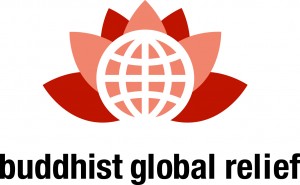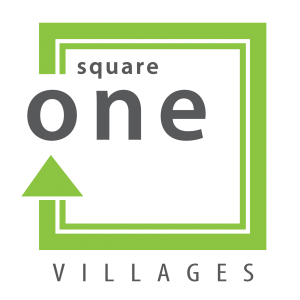Support for Q1 2016 to build relationships
By AdministratorAt the end of the 2015 fundraising year, non-profit organizations have all experienced the energy and expenditures it takes to raise money. This quarter’s five beneficiaries will receive grants this quarter which are also renewable in Q1 of 2017. This continuing support will allow FBB to incorporate philanthropic best practices and give our beneficiaries assured support in the future.
 Buddhist Global Relief (BGR), our Challenge the Gap beneficiary, combats chronic hunger and malnutrition, relying on the teachings of the Buddha for the motivation of their charitable efforts. BGR’s programming is broad: they provide direct food aid, help develop better long-term methods of sustainable food production and management appropriate to the cultures and traditions of the beneficiaries, promote the education of girls and women, and give women an opportunity to support their families.
Buddhist Global Relief (BGR), our Challenge the Gap beneficiary, combats chronic hunger and malnutrition, relying on the teachings of the Buddha for the motivation of their charitable efforts. BGR’s programming is broad: they provide direct food aid, help develop better long-term methods of sustainable food production and management appropriate to the cultures and traditions of the beneficiaries, promote the education of girls and women, and give women an opportunity to support their families.
BGR has been already been featured twice in Challenge the Gap, in Q2 2011 and Q1 2013.
 SquareOne Villages is a collaboration between the housed and the unhoused providing stable, safe, and sustainable places to live through alternative, cost-effective approaches for transitioning the unhoused to more permanent living situations. The villages accommodate about 30 individuals and couples who would otherwise be homeless in small houses built by volunteers. Utilities like cooking, gathering space, restrooms, and laundry are communal to lower costs in these self-governed communities. The village costs $3 per resident to run, of which $1 is paid by the resident.
SquareOne Villages is a collaboration between the housed and the unhoused providing stable, safe, and sustainable places to live through alternative, cost-effective approaches for transitioning the unhoused to more permanent living situations. The villages accommodate about 30 individuals and couples who would otherwise be homeless in small houses built by volunteers. Utilities like cooking, gathering space, restrooms, and laundry are communal to lower costs in these self-governed communities. The village costs $3 per resident to run, of which $1 is paid by the resident.
A SquareOne Villages goal is to be a model for other programs across the country, read more about the developments of the tiny house concept in “Can Oregon’s tiny houses be part of the solution to homelessness?” at The Guardian.
 Starfish has developed a wonderful process of identifying girls and families that will be most successful within their Girl Pioneers Program. They embody a whole family model to support their Pioneers. The mentoring time between Pioneers, their mentors, and families is a core part of their program.
Starfish has developed a wonderful process of identifying girls and families that will be most successful within their Girl Pioneers Program. They embody a whole family model to support their Pioneers. The mentoring time between Pioneers, their mentors, and families is a core part of their program.
After years of running staple programs, Starfish recognized that while some education is better than no education, the traditional Guatemalan education program is not designed to enable their Girl Pioneers into stable careers to give them real vocations and incomes to reduce poverty. Unfortunately, while Girl Pioneers experience education far beyond their peers, the education was not as effective as Starfish was ready to accept. Starfish is making things change rapidly. Learn More in our previous blog post, “Investing in gender equality with education."
Starfish received our Compassionate Impact Grant in Spring of 2015 to invest in teacher training.
 Dudley Street Neighborhood Initiative (DSNI) has been working through community organizing, activism and empowerment in the Dorchester/Roxbury neighborhoods in Boston, MA for over 30 years. While starting with a campaign to clean up illegal garbage dumping sites on vacant lots, DSNI never stopped responding. Subsequent projects include street art, revitalizing a business district and transforming a low-density neighborhood into a vibrant affordable housing community.
Dudley Street Neighborhood Initiative (DSNI) has been working through community organizing, activism and empowerment in the Dorchester/Roxbury neighborhoods in Boston, MA for over 30 years. While starting with a campaign to clean up illegal garbage dumping sites on vacant lots, DSNI never stopped responding. Subsequent projects include street art, revitalizing a business district and transforming a low-density neighborhood into a vibrant affordable housing community.
DSNI’s focus on neighborhood collaboration, resident-led programming, and nimble program focus has enabled them to thrive for decades. Find out more from our previous blog post, “Dudley Neighborhood – Tell me More.”
Dudley Street Neighborhood Initiative received our first Compassionate Impact Grant to support financial education programming, in fall of 2014.
 Lighthawk takes research to the skies. By connecting scientists and planners with volunteer small plane pilots, they enable systematic monitoring, research, and planning of natural areas and animal populations.
Lighthawk takes research to the skies. By connecting scientists and planners with volunteer small plane pilots, they enable systematic monitoring, research, and planning of natural areas and animal populations.
Lighthawks’s work and research collaborations provide photographs, video, and images to aid scientific research. Written descriptions of Lighthawk's work and collaborations aren't sufficient to describe how crucial their photographs, video, and imagery are to small scale research. Lighthawk’s story is best told in pictures. Lighthawk is the connection between on the ground research and satellite research – in the sky research. To find out more, read “Fly to Save the Earth” in Smithsonian: Air and Space.
